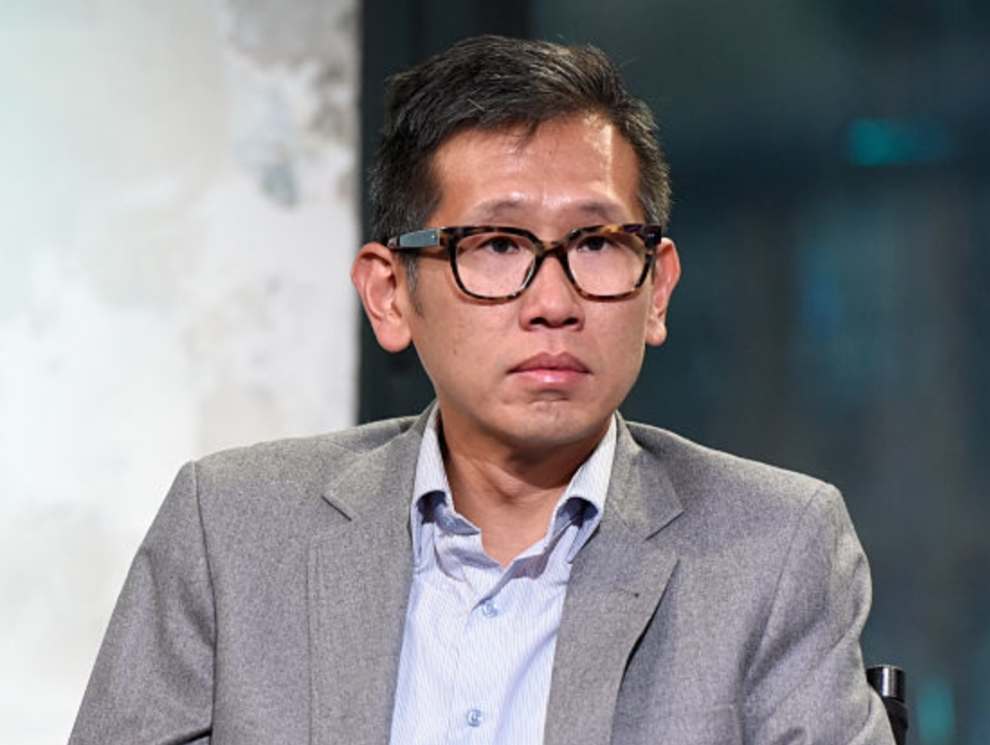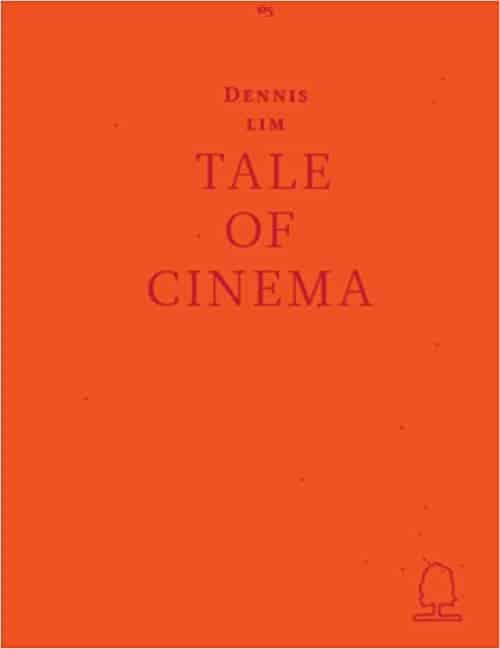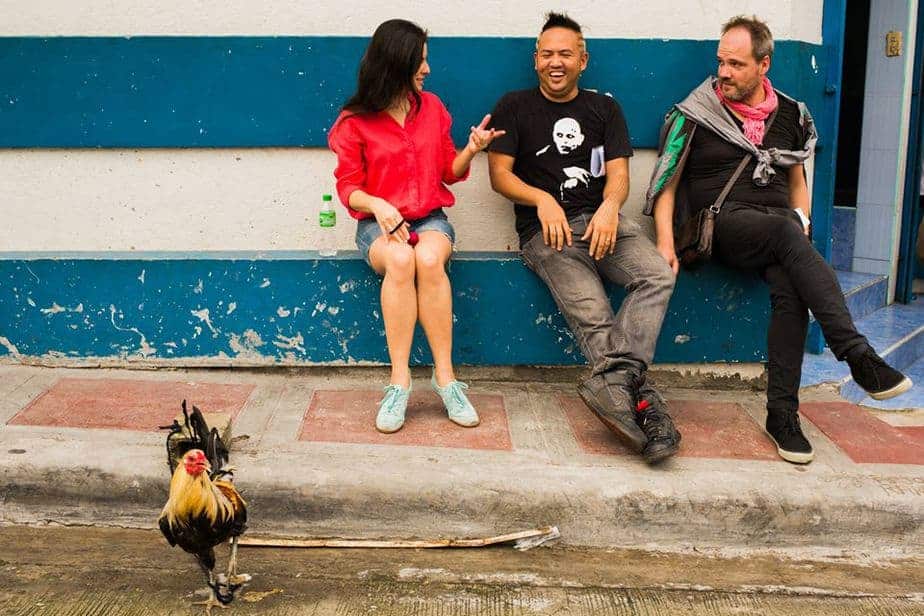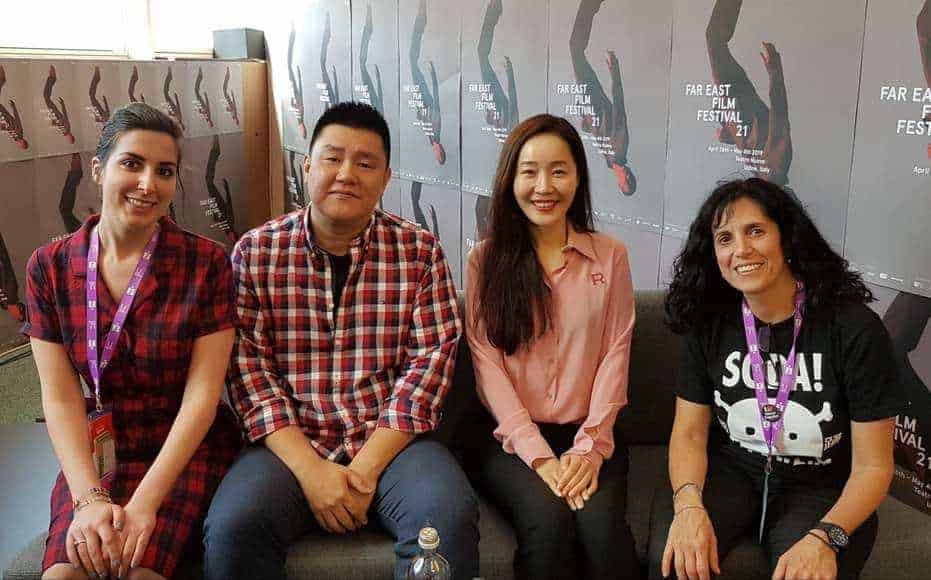The main thing a lot of Hong's films have in common, are elaborate structures. They are different variables of the same story, and ultimately, same issues. The characters in his films give in to their libidinal drives; reconnect with the past and try to make peace with it; somebody disappears, or reappears, and puts things in motion. We watch a story within a story, a flashback, or a variation of the same events: with Hong, you never know exactly what game he's playing with you. Dennis Lim's book “Tale of Cinema” (eponymized after Hong's film) tries to emulate the directors' playfulness. There are twelve chapters, six numerated in Roman numbers, and six in Western digits. We read chapter ii., to turn the page and, to our surprise, begin reading chapter 2. One would say: a typically Hongian construction. Each part has its theme, but they also revolve around, and circle back to, the same aspects of Hong's filmography. There is a chapter on the zoom, Hong's trademark device (Lim writes: “Zooming is an index of control”). There is also one discussing the concept of a “minor work” (a descriptor used all too often in the context of Hong's films). And, of course, there is one about boozing and characters extensively drinking soju.
Buy This Title
on Amazon by clicking on the image below
Lim's “Tale of Cinema”, although unusual in structure, is a pretty straightforward book. The author's prose, even if supported by academic research and dealing with complex ideas, is lucid, at times even aphoristic. You get passages abounding in critical precision and brevity, like this one, probably my personal favorite:
One of Hong's great themes is the divergence between the images in our head and the materiality before us, and sex is one realm of human activity in which fantasy and reality are all but certain, at some point, to part ways.
The original premise of the book was to discuss all of Hong's films by writing about just one of them. A fool's errand? After all, the author writes himself: “he always makes some version of the film you expect of him; the astonishment is just how many versions exist”. Lim takes on this challenge, and writes about “a stealth holiday movie” which is also “Hong's most concerted exploration of one of his favorite themes: the narrativization of the real”.
In your book you embark on an impressive task: by writing about “Tale of Cinema”, you try to encapsulate Hong's career. The premise is to write about his oeuvre by speaking about only one film. This is of course especially challenging, given how prolific he is. Also, to me, Hong as a director oftentimes proves to be impermeable to criticism. Approaching his films, and reviewing them as standalone pieces, turns out to be really challenging. How does one do it without sounding too superficial?
I think this idea of Hong being a difficult subject was part of the project, and central to what I wrestled with. It was very difficult to get to the point where I felt ready to write about “Tale of Cinema”. It required many months of rewatching and note-taking and cross referencing his other works. I started writing the book when he had made 26 films, and he made three more in the course of me writing this book. That perfectly illustrates this problem that you're describing. In the book I address the difficulty of seeing Hong's work clearly: “How do I see through this fog of repetition? And how do I see through this abundance?” Those difficulties of “seeing” Hong are also what make him interesting and say something about cinema today.
You mention the superficiality, and I think this was something I was noticing when reviewing his films as well. Because how do you wrap your arms around a body of work that is so big, and is constantly growing? We are also talking about films which are filled with all these weird tricks of perspective and memory, where you're not sure if you're remembering something from one film or from an earlier one…
And I also think that his films pose a unique problem for critics, because of all those similarities. You even write in your book: “With each new entry in the filmography, the reviews pile up, more repetitive even than the films”. So, how does one approach another seemingly identical film again, with the same fresh eyes, and the same scrutiny?
It's hard to only see one Hong film, simply because the project is so much about repetition. I think you need to expose yourself to a few more of these before that logic kicks in fully. In the early films, I think it was more possible to isolate each one, and think “ohh, this is a really sharp incisive film”, and then you would respond to it's form and content… At the beginning, Hong was described as an observational-behavioral filmmaker, who's interested in how men and women react to one another, and really… how shitty men are. That's how a lot of the early Hong films were discussed. That makes them easier to take in isolation as distinct works. The later works? I think they're harder to pull apart. They seem to be part of one large film, one large project. Now I see each and every Hong film as a continuation more than a standalone work necessarily.
Check the review of the film
The repetition in his work is rarely used as an argument against him. Which is quite interesting, because then you get someone like Xavier Dolan who's accused of making the same film over and over again – and in the context of Dolan this is meant as a criticism. So how come Hong gets a free pass at making “the same movie”?
Because he makes it so obvious! I think this idea of the author's signature is at the heart of how we approach cinema. There is this notion that any artist makes one work over and over again, it's just that they find different ways to do it. Hong is more explicit about that. I do think some people dismiss him because they think all the films are the same. But if you watch closely, it's pretty clear that he is interested in variations, as much as in repetitions. And you can only achieve that by doing something again, but altering the premise ever so slightly. It's almost like a science experiment. For Hong, repetition provides a clear structure, you cannot miss it in any of his films. Like in “Tale of Cinema” – one narrative plays out, then another. So, his works also become about people who are compelled to repeat themselves. There's no attempt to disguise it on his side. It's so much the subject of the film.
With the example of different filmmakers that you gave, there may seem to be a lack of imagination or urgency to what they're doing. And that's what people are finding fault with. But with Hong, it's not. It's pretty clear what he's doing. And if you're on that wavelength, you will respond to the films. I know many people who don't really value the project. I think, however, it's gradually moved over the years, and more and more viewers get on board.
His work became an object of cult over the years, and it's hard to view it without that lens anymore. But I wonder, what is your personal recollection of his first films, what was the first contact you had with Hong, before he was embraced as this global figure of arthouse cinema?
I think he was already onto his fourth film when I discovered him. He established himself at the time when such filmmakers as Park Chan-wook, and later Bong Joon-ho, were also coming to the fore. But Hong of course was much different. Looking at his career's development, there is such a clear movement. The films get simpler, they get more bare-bones. They get cheaper. He also accelerates as he goes. So, ironically, his most elaborate films with the most complex scripts and locations, sets and budgets, are his first ones! Ever since his debut, Hong was set on a different model of filmmaking. It was always about stripping down. And “Tale of Cinema” is the inflection point where his practice goes through an evolution.
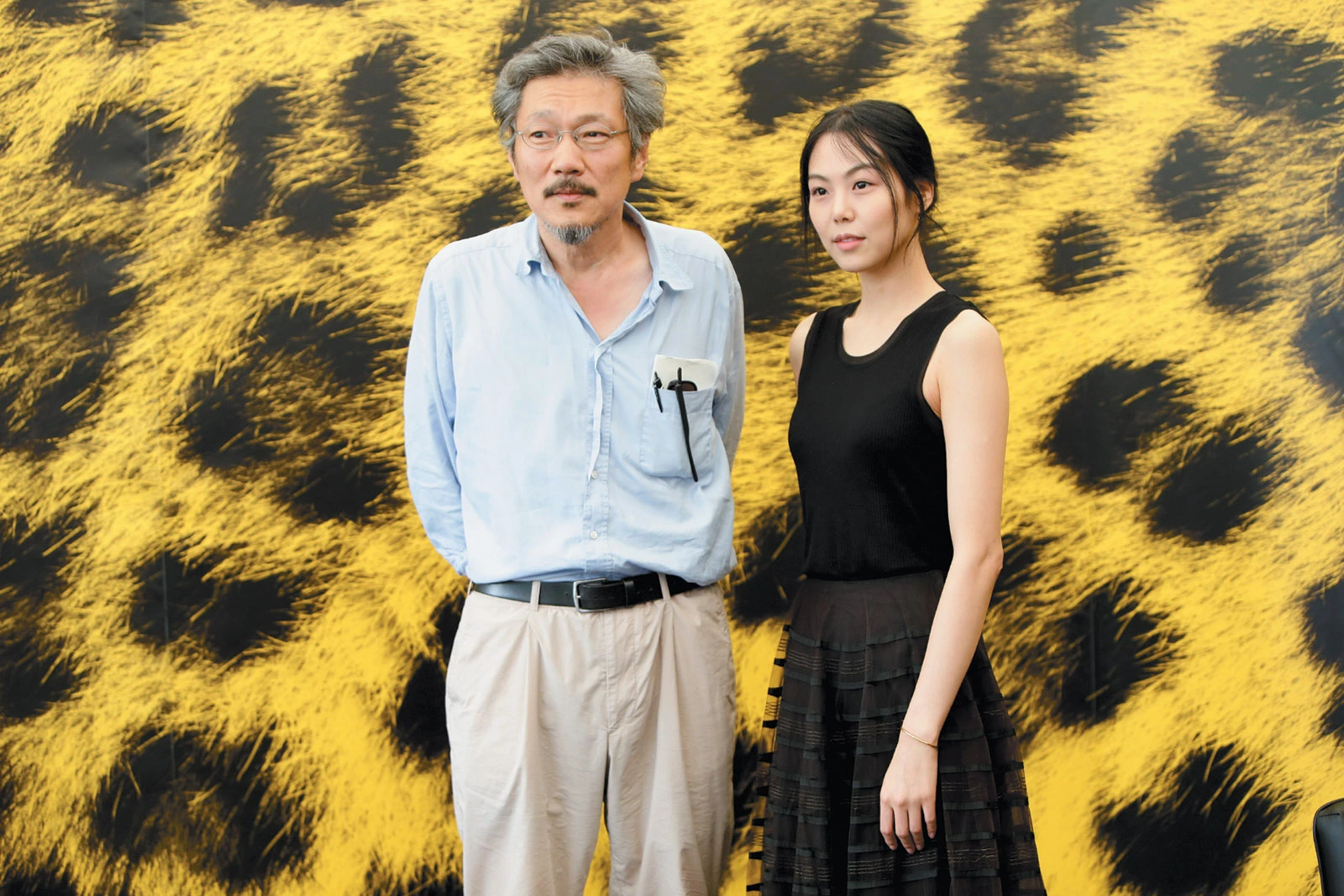
Can you put your finger on where exactly this project, or “Hong multiverse” as you call it in the book, started in his career?
I think there are few moments. “Tale of Cinema” is maybe the first step, which is why I thought a book about it could be a good point of entry. It's the first film that he made through his own production company, so that's always already a move to a certain kind of independence. His way of working is very unusual. He enters production without a script anymore in “Tale of Cinema”, he gave them up and only used treatments. Things get even simpler with “Oki's Movie”, his 11th feature, when he quits using treatments too and goes into production without them. The films get progressively more minimal. Now, when he makes a film, all he needs is as little as two locations and three actors.
But it wasn't only his way of working that evolved over the years, there is also a thematic transition. You can trace a change in Hong's relationship to his characters. They've always been films about men and women, but I think over time, he became more comfortable putting women at the center. There is an attempt to access their points of view, and more confidence in approaching female characters.
We speak a lot about the more cerebral side of Hong's filmography. Structures, repetitions, etc. But these are also films which often deal with intense emotions, imperfect relationships, themes that are in many ways relatable, regardless of whether you are on board of his project or not. Is there a moment in Hong's oeuvre that stands out to you, as something that you identify personally the most with, or something that resonates with you the most?
I think the most moving moment in all of Hong is probably the ending of “The Novelist's Film” — the-film-within-the-film that the novelist, a first-time filmmaker, has directed. It speaks to Hong's relationship with Kim Minhee with a simplicity and directness that carries a real emotional force. I think also of their first collaboration in “Right Now, Wrong Then” — there's an incredibly powerful moment when Kim's character learns something about the man she has just met, and the camera zooms in on her and then pulls back as she silently takes in the information.
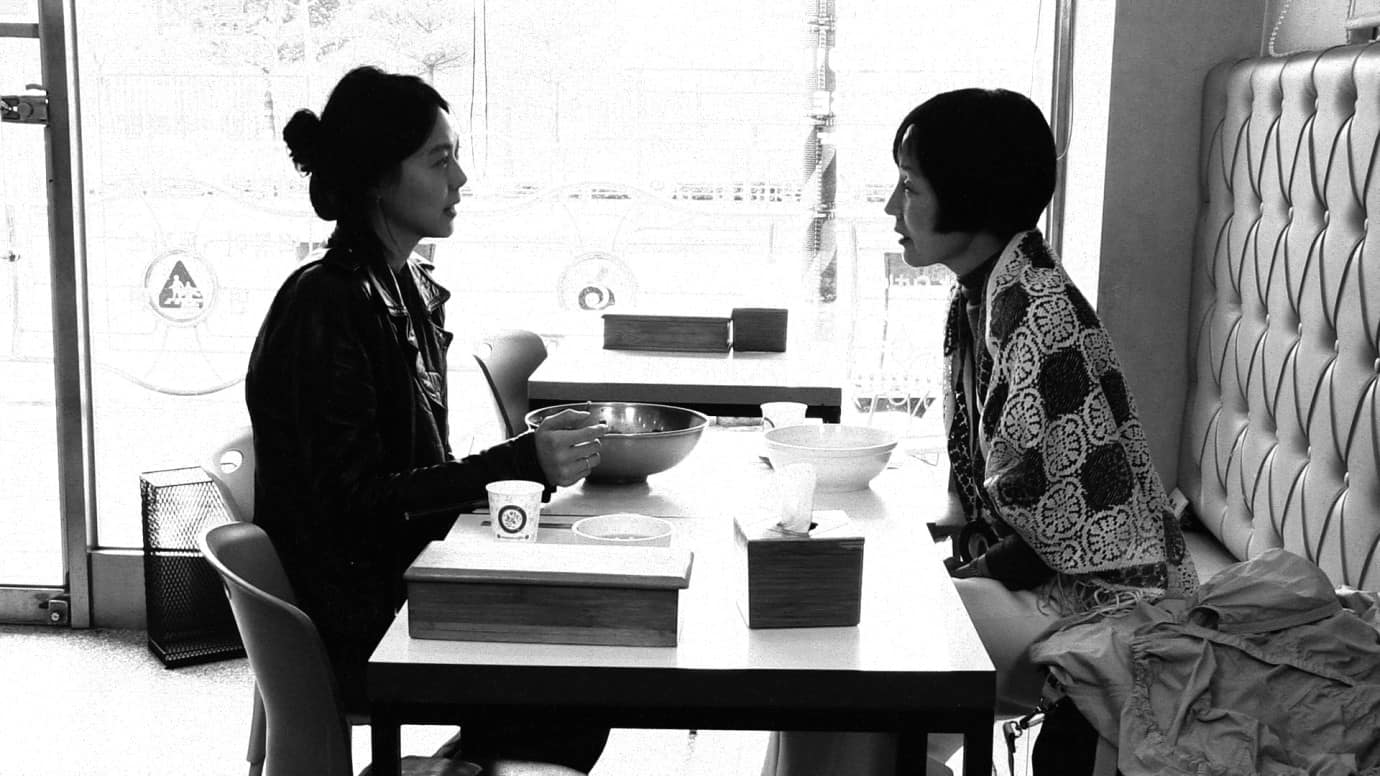
You devote one of the chapters to the zoom in his films. It is very unusual to be able to identify a specific visual device particular to one director. It's safe to say, however, that few other directors use it to such a jarring extent like Hong. How did it become his trademark? And what is it that a zoom gives him?
Hong uses zoom in a very pragmatic way. For him, it's simply a way to get closer to the actors, to change the frame, to redirect our attention, to punctuate and vary the rhythm of a scene, sometimes to get a laugh — all without having to interrupt the action or start the scene over. “Tale of Cinema” features his first use of the zoom, and it's in every single one of his films (I think) up until “The Novelist's Film”. If I'm not mistaken, his two most recent features are notable for not using the zoom, and it's interesting to see him set aside, at least for the time being, this trademark device.
Do you think that his current mode of guerilla filmmaking is something that other directors could model themselves at?
I wish more people would work like him. Without really meaning it in a super literal way, that more people should make Hong Sang-soo films. I really don't think that's necessary… But his career questions the entire apparatus of filmmaking, in the way he became a self-sufficient filmmaker. To be so prolific – it's really rare. He's managed to remove all the obstacles and nuisances that go into the planning of a film. Hong's oeuvre shows us what can happen in that case, and it's really instructive. Just a few months ago we did a complete retrospective of his work, at the Lincoln Center in New York, and a lot of the audiences were younger filmmakers. I remember talking to some people who were like “oh, I'm going to try this way of working. Why do I need a script?”. I probably wouldn't recommend going down that route. We should talk about screenwriting as a necessity. I think it's important. Some films really need scripts… and some people really need to work that way.
But if you look at how Hong operates now, he really has nothing. He reverses the whole process. The first thing that he does is to schedule a shoot: “I don't have an idea. I don't have anything. I'm going to make a film in a month.” That's the first step. And then, he works with what's available: “what locations can I use in that week that I've set aside? Which actors are available?” and then, and only then, he moves to: “what stories would be interesting for me to explore? What narrative form do I want to play with this time?” I wouldn't say that people need to replicate his model, but let's use his case as a way to provoke thought.
A thing that comes with this way of working, I think, is that this free-flowing approach may generate many scenes which, seen in isolation, are not exactly up to standard.
So it becomes a self-fulfilling prophecy. “Yes, he can make those films cheap. And therefore they can be imperfect”. So this goes back to the impermeability of his works to criticism, I think. It takes away the arguments someone may have against him. Do you see a contradiction here?
No, I think that actually makes sense. There's a chapter in the book which wrestles with this idea of “what is a minor film?”. And I think, related to that, you could also add: what is an imperfect film? What are these measurements that we use? Of course, I think you're right that a scene from a Hong film, taken in isolation, may seem awkward or stiff. The reason that a scene like that works, I would argue, is because it's not just about that scene. It's not about any scene in isolation necessarily. It's about the structures they create, that's when this whole project truly begins to work.
He also said that he's not interested in beauty in the conventional sense, even though I think some of his films, especially the early ones, have really beautiful passages and are aesthetically framed. I think he's interested in challenging this romantic idea of auteur filmmaking that we have. In some ways, I think Hong is a very confident filmmaker. I think he really believes in his ideas.
The book “Tale of Cinema” was released by Fireflies Press in the Decadent Editions which is a series of 10 book-length essays profiling films that were released in years 2000-2009, each book per every year.


